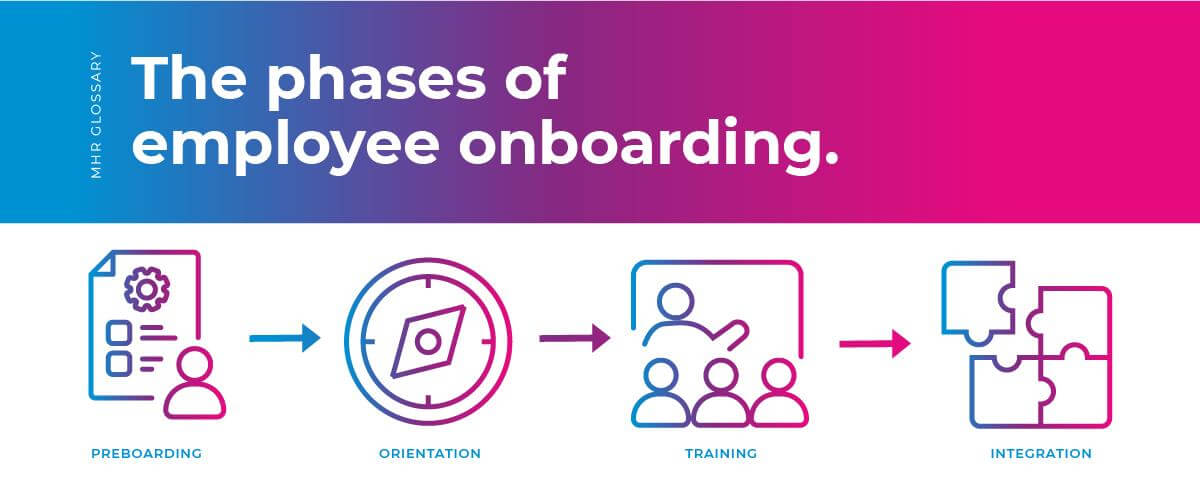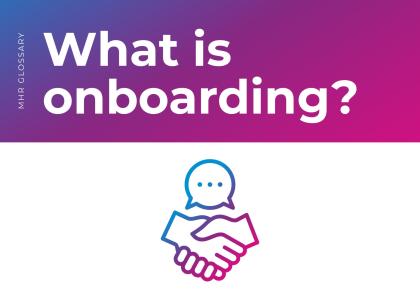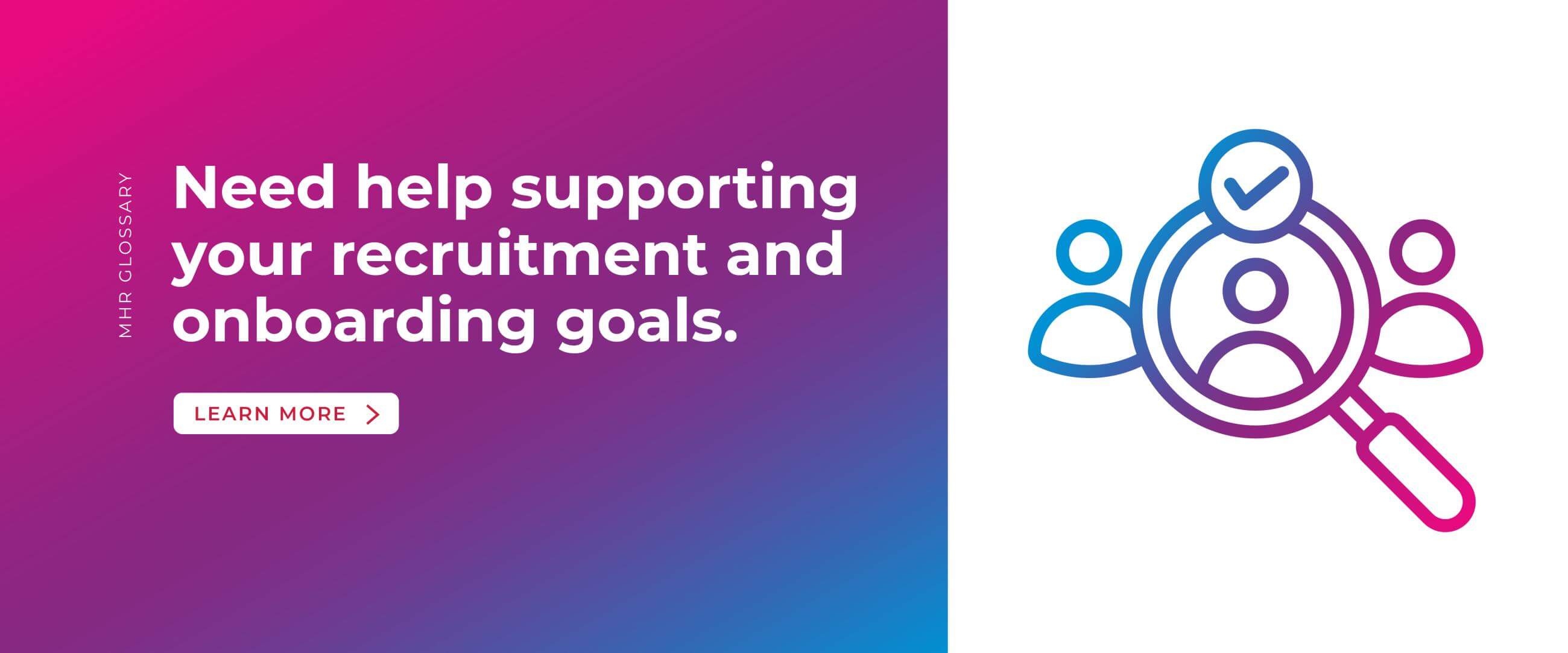Defining Employee Onboarding
Onboarding is the process by which a new employee is introduced to and integrates with your team. It’s all about helping employees understand what’s expected of them.
You really can’t overstate the importance of a comprehensive onboarding process. Imagine starting a new job and being left to figure everything out by yourself. Your policy documents never show up. No one explains how the company task management system works. You don’t know who you report to, or what anyone else in the department does. How are you supposed to do the job you were hired for? You’d probably quit. In fact, most people would, with over half of employees who receive a poor onboarding experience leaving the job within a year. That cost of that adds up quickly. HR has a vital role to play in creating a consistent and effective onboarding process. This requires a strong understanding of the stages of employee onboarding and best practice.
It’s important to note that onboarding is needed for just about every role in every business. Whether you have a part time retail employee or a director with a large department under them, everyone needs to be onboarded.
The phases of employee onboarding
While the exact nuances of onboarding will vary from organisation to organisation (and even potentially between different teams within one company), there are four key stages that any realistic onboarding programme will account for.
Preboarding
Preboarding is everything that happens once the candidate accepts your offer but before they arrive for their first day. Typically, it’s focused on the nitty gritty technical details, making sure all the important forms are filled in, and the hire knows how and when to get to you.
You can learn more about preboarding in a bit more detail by reading our complete glossary page.
Orientation
As a rule of thumb, orientation should take place on the first day of a new role. It might extend out to more days, but the bulk of it should be handled as soon as possible. This will involve tourns of the building for on-site roles, introduction to colleagues as well as going through any policy or benefit documentation.
Introducing the hire to a buddy who falls out of their direct management hierarchy is helpful, as this gives them someone to go to who doesn’t have an impact on their career. This can help them feel more comfortable asking what they may feel are ‘silly questions’.
Training
Even if you hire an expert in their field, it will take a while for a new hire to acquire all the skills they need to do their job. Role-specific training and development should be given over the course of the first three months to support them.
For junior roles this is particularly important, but you should leave senior employees floundering either. The chance to upskill is a vital part of talent management.
Integration
It’s not enough to hire an employee and leave them to do their job. You also need to help them integrate fully into the team. This can take the form of ongoing support or feedback. Check-ins and team meetings are helpful for this, as it helps build a relationship between managers and employees. Social events can also help, as long as they’re not mandatory, especially if you have a large remote or hybrid workforce who might otherwise feel isolated.

From onboarding to role transition
Onboarding is often seen as solely something that happens when you hire a new person, but you also need to think about it in regard to role transitions. Whether it’s a vertical or horizontal, a career move can be a huge change to one’s working life, so having the extra initial support is needed. Feedback is a vital part of any onboarding process. New employees will come into roles with a different perspective on how things are done, and they won’t instinctively know.
Support and learning opportunities shouldn’t stop after a hire has been in place for three months. These features form an important part of the employee experience. Offering access to tools such as an LMS, or mentoring opportunities can help employees adjust to new roles as well as feel appreciated.
Best Practices for Successful Onboarding
Again, a successful onboarding strategy will look different to different organisations, and can even vary somewhat between departments and roles within an organisation. However, there are some solid best practices to follow that will ensure things work as intended. If you want to find out how successful your onboarding is, talk to your employees! Ask how they’re settling in, what could make their experience better and what’s been working. Then, make sure you action their feedback where you can. Feeling listened to and appreciated can smooth over a lot of onboarding headaches. This also ensures that you can tailor the onboarding process to individual needs.
Technology has a huge part to play in modern onboarding strategies. With an effective HRIS system, you can more easily track and manage new hires, ensuring everyone’s having a consistent experience. An LMS can ensure you set up a learning schedule for them, letting them process mandatory training in their own time. The most important rule of all is that your onboarding needs to be engaging and it needs to be inclusive. Don’t just plug the employee in front of a mandatory training video or lecture and leave them to get on with it. Onboarding should have some set elements (especially where compliance training is required), but it should also be conversational.
Inclusive onboarding isn’t just about Diversity and Inclusion training, although that should absolutely be included. It’s also about ensuring information is conveyed in an accessible way. A lot of companies have their own internal language and acronyms, for example, and this can be incredibly alienating for a new hire, especially if they are neurodivergent. Likewise, there may be many unwritten rules within the department that can cause upset if a new hire misses them. Inclusive onboarding factors this into proceedings.
Frequently Asked Questions about Employee Onboarding
What’s the difference between orientation and onboarding?
Onboarding is an umbrella term of which orientation is just one part. If your onboarding only covers orientation there will be huge gaps in the process.
How long should the onboarding process take?
As a rule, onboarding take place over the course of three months. However, when training and integration are factored in, it can often take over a year for an employee to be fully onboarded.
One of the most common misconceptions about onboarding is that it should get a new hire up and running as quickly as possible. Throwing new employees in at the deep end is a recipe for disaster. Onboarding should give them plenty of time to settle in. However, it’s also a mistake to have onboarding take too long. Many people learn best by doing rather than studying, so for them the best way to figure out how their job works is to do it. Don’t swamp them in reading material and studying.
Final thoughts
If you’d like to enhance your onboarding experience, ensuring all your new employees are thoroughly immersed in your company culture and requirements, People First is the solution for you. Learn more about how we can support your recruitment and onboarding goals.




